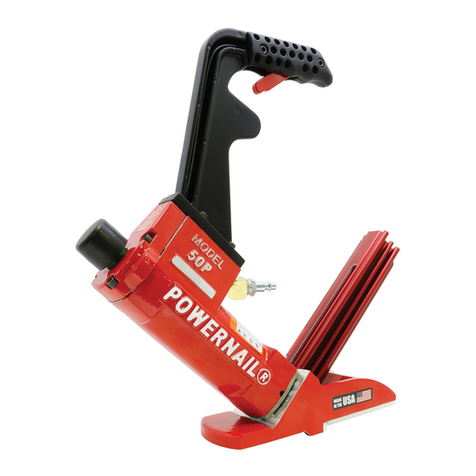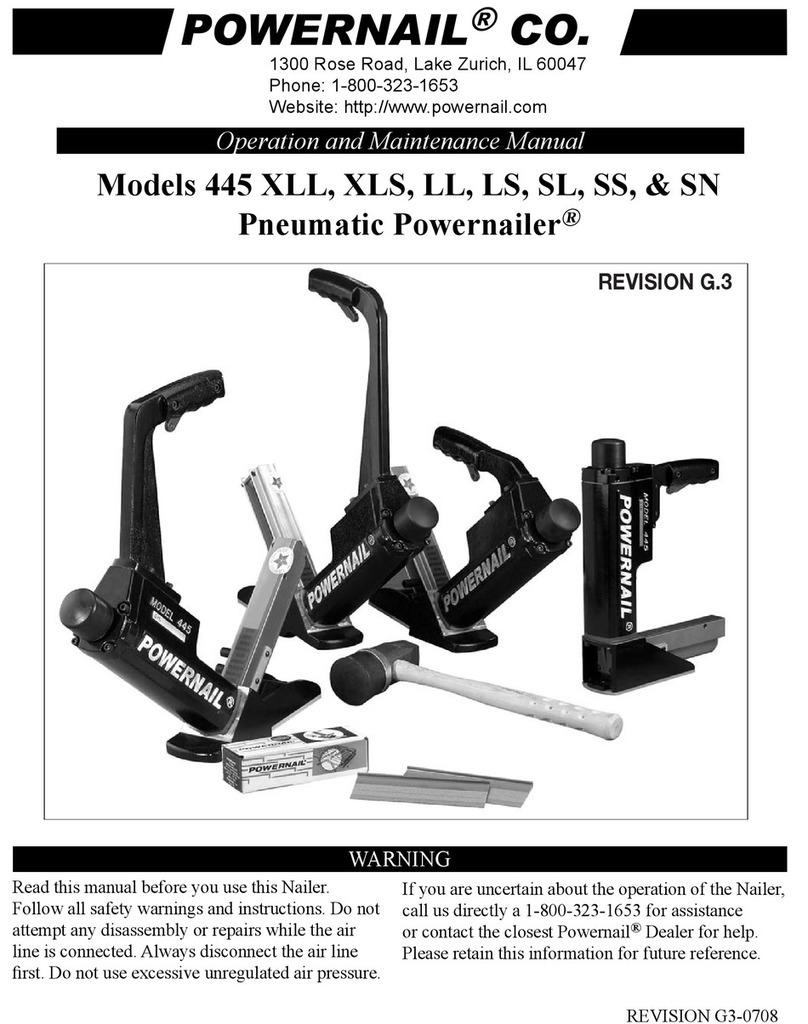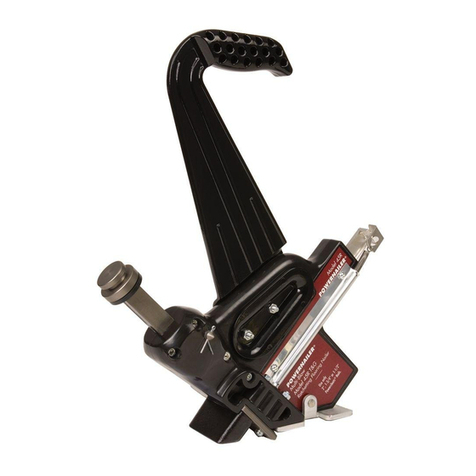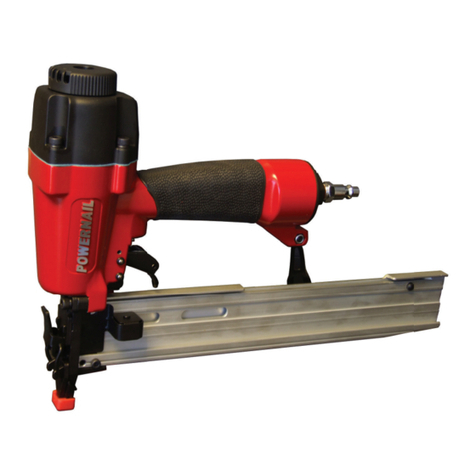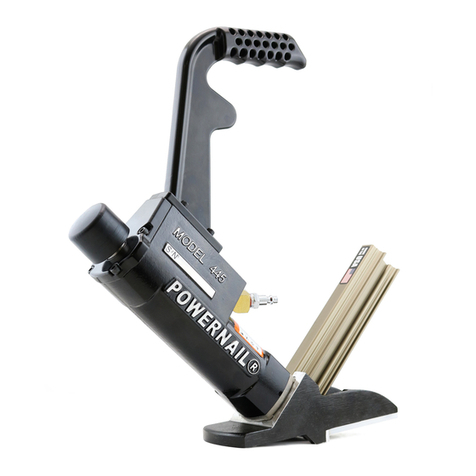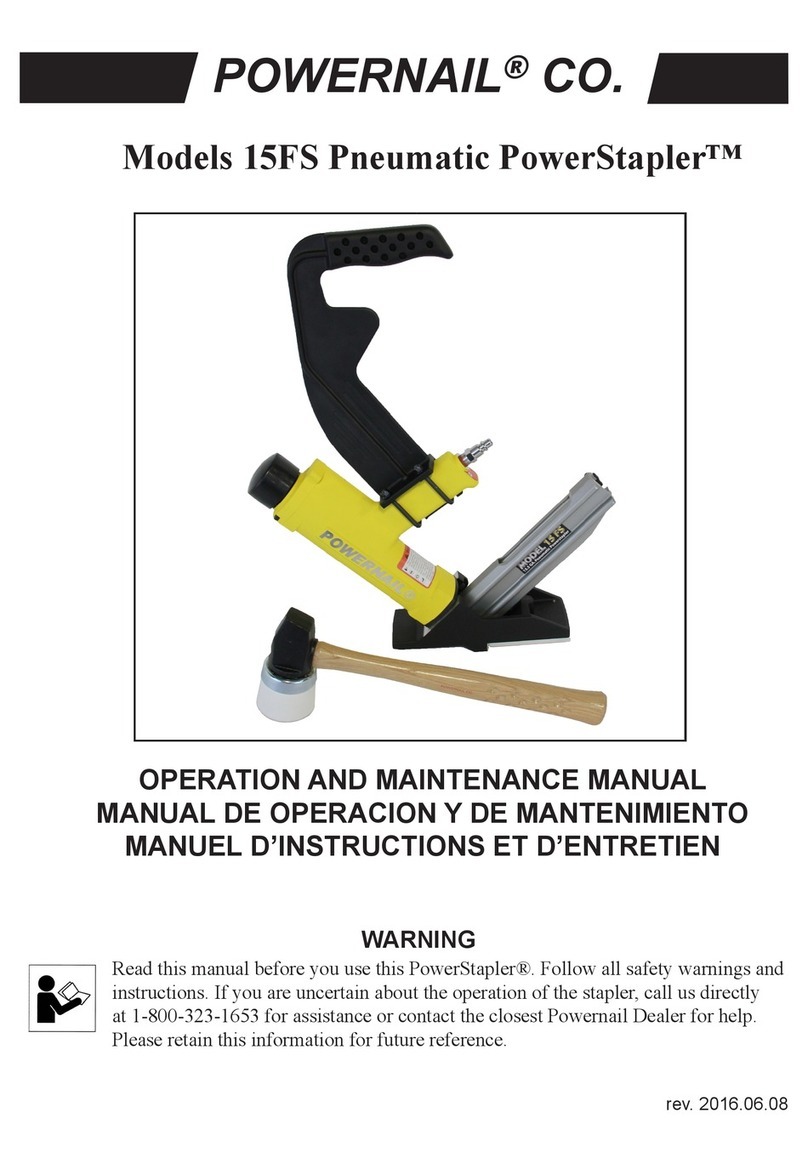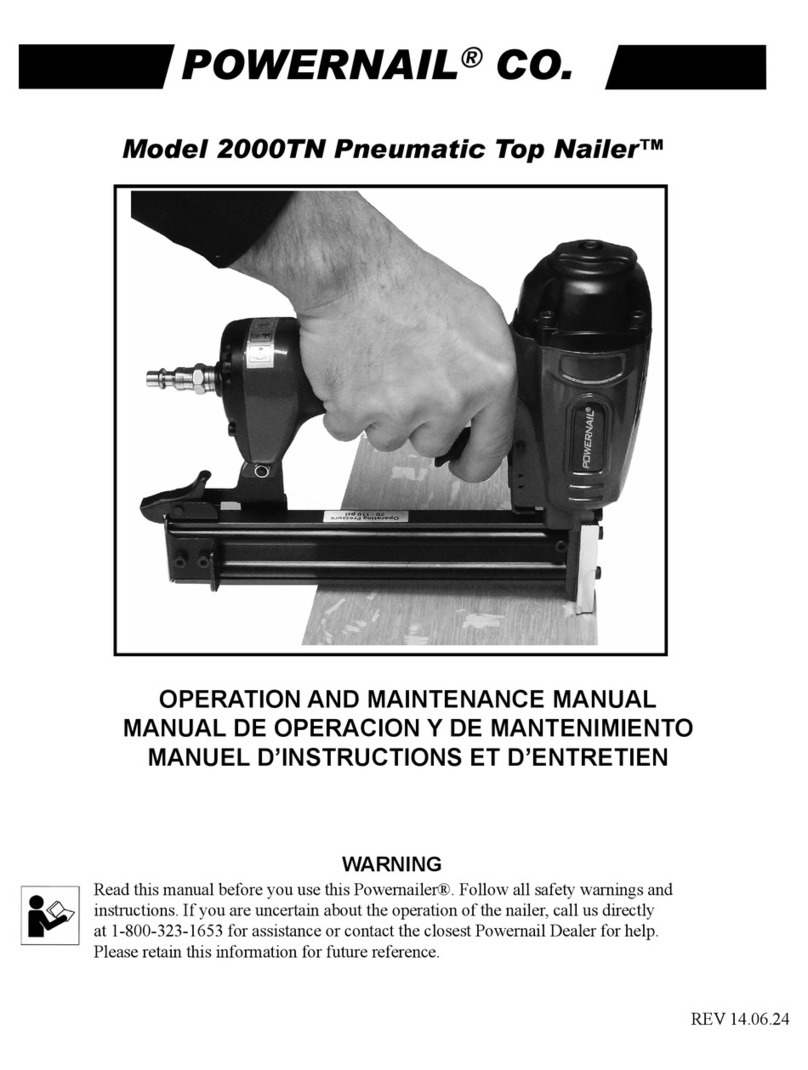WARNING Whenever air is connected to
the Nailer, keep body parts
away from the nail discharge path. Disconnect the
air line before making adjustments or repairs on the
Nailer. Only connect air to an unloaded Nailer so
as to prevent accidental discharge.
Consult the drawing for the appropriate adapter
pad to use with the thickness of ooring you are
installing.
Rack the ooring into place with the rubber end of
the mallet supplied with the Nailer
Place the Nailer Adapter Foot on the tongued
edge of the ooring strip to be nailed. Be sure the
Adapter Foot is pressed tightly against the edge of
the ooring strip above the tongue.
Be sure ooring strips are racked tightly. Pull the
Safety Trigger and tap the Nailer Plunger Rubber
Cap with the rubber capped end of the mallet to
discharge the Nailer.
WARNING It is not necessary to hit the
Nailer hard to activate it. Never hit the Nailer with
excessive force or with the metal end of the mallet,
this will damage the Nailer.
Never use the Safety Trigger interlock to lock up
the plunger and rack the wood with blows to the
Nailer body. This will severely damage the safety
mechanism and Nailer. This abuse and damage is
not covered by the warranty.
Before each use check all screws to be sure they
are tight. Shock and vibration can loosen screws.
Do not over tighten any screw.
AIR SUPPLY:
The air must be clean and dry. Dirty and/or wet
air will damage the Nailer. A combination lter-
regulator-lubricator is required for proper Nailer
performance and should be placed close to the
Nailer per manufacturers’ recommendations.
Drywall Dust:
• Using Pneumatic Powernailers in drywall dust
conditions will dramatically decrease the life of
the Nailer.
• Drywall dust is abrasive, when cycled through
the Nailer it will cause excessive wear.
Fill the lubricator with a high-quality Air Tool
Oil. Adjust the lubricator to the manufacturers’
recommendations. Do not over oil the Nailer, as
excess oil will be discharged with the spent air and
could stain the wood ooring, walls or furnishings.
We will not be responsible for oil stains.
WARNING Detergent oil is not
recommended and may damage the seals. Consult
the lter regulator lubricator manufacturer’s
recommendations for proper operation, settings and
unit maintenance.
The air source must continuously deliver 100 to 120
psi and 3-1/2 cubic feet of air per minute to operate
the Nailer Connect a 1/4” minimum internal diameter
and clean air hose to the Nailer. Be sure the air
regulator is set at 90 psi. If the nail is not countersunk
below the surface of the wood, turn up the air
pressure, but not over 120 psi.
Check for air supply leaks that waste air and starve
the Nailer of air thereby reducing its performance.
There should be no orice smaller than 1/4” in the air
path between the Regulator and the Nailer.
LUBRICATION:
If you do not use an in line lubricator, you must
lubricate the Nailer manually. The frequency of
lubrication is dependent upon the duty cycle of the
Nailer. Continuous duty requires more frequent oiling
than intermittent duty.
At least every eight (8) hours place two to four drops
of Air Tool Oil, supplied with your Nailer, into the
disconnected air line male connector attached to the
Nailer.
WARNING Do not over lubricate the Nailer,
excess oil mist or drops will be vented with spent air
when over lubricated. Excess oil could stain the wood
ooring, walls or furnishings. Dry re the Nailer,
without nails, to purge excess oil, before you begin to
nail down ooring.
We will not be responsible for oil stains. Before
storing the Nailer, lubricate and cycle the Nailer in
insure internal parts are oil protected from corrosion.
3
OPERATION
Read these instructions carefully before you use the Nailer.




